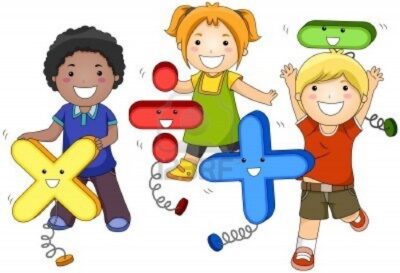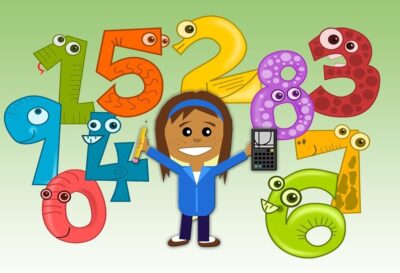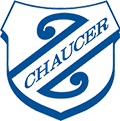Emergent Stage 0
 Children learn more when their parents and whanau are interested and involved.
Children learn more when their parents and whanau are interested and involved.
There are many things we can do to support our children’s learning in Mathematics by using the everyday experiences and resources that we find around the home.
Lets make Maths fun, amusing, and entertaining!
Children at this stage need to…
- Recognise numbers up to 10
- Count forwards to ten
- Count backwards from ten
- Know numbers before a given number
- Know numbers after a given number
- Order numbers up to 5
- Order numbers up to 10
To help your child strengthen their knowledge and move on from this stage you can play some of these activities.
Try these at home…
- Card Games:
Number Recognition: Player turns a card over and calls out the number.
Number Snap: Players turn over the top card from their face-down pile. They match cards and race to be the first to call “Snap!”
Before or After: Players take turns to flip a card onto the pile and say what number comes before/after the given number. Eg: “What comes after 2?” “What comes before 8?” - Board Games:
Snakes and Ladders: Children recognise the number on the dice and count on from a number that many spaces. - Count and Group Objects: Eg: “Get me 3 spoons” “How many plates are on the table?”
- Form numbers using play dough
- Sing counting songs: Eg: One, Two Buckle My Shoes, 1, 2, 3, Little Indians, 10 Green Bottles Sitting on the Wall.
- Play What’s My Number?: Choose a number between 0 and 10. After each guess you say if it is “Too high/too low” until they guess the number.
Numeral Symbols:
You can recognise and write numberal symbols using giant chalk on the asphalt, sand or glitter in trays or even a squirty drink bottle filled with water.
- Number 1 is straight and tall. Stand him up, don’t let him fall.
- Number 2 has a curly top, a little platform and than a stop.
- Two curls has Number 3, one for you and one for me.
- Number 4 is down like 1, then across and another one.
- A neck and a curl for Number 5, a cap on hid head keeps him alive.
- Down the hill for Number 6, around the pond…but don’t throw sticks.
- Number 7 has a cap like 5, down the hill you take a dive.
- Number 8 a snake you draw. Then back again, it is the law.
- Around the pond for Number 9. Then down the hill make a line.
- A 1 and a 0 for Number 10. Off you go, start again.
One to One Counting Stage 1
 Children learn more when their parents and whanau are interested and involved.
Children learn more when their parents and whanau are interested and involved.
There are many things we can do to support our children’s learning in mathematics by using the everyday experiences and resources that we find around the home.
Lets make Maths fun, amusing, and entertaining!
Children at this stage can count all objects in a group but don’t yet add two numbers together.
Children at this stage need to…
- Read numbers to 10
- Count forwards and backwards to ten
- Say the number before/after a number between 0-10
- Order numbers to 10
- Know finger patterns to 10 eg: 5 and 1 is 6, 5 and 3 is 8. (Fast Fingers)
To help your child strengthen their knowledge and move on from this stage you can play some of these activities.
Try these at home…
- Body Games:
Fast Fingers: Children answer questions using their fingers. Eg: “Show me 3?” “Show me 8?” “Who can do it faster?”
Body Parts: Children answer questions. Eg: “How many fingers on your hands? How many eyes help you to see?” - Count everyday objects. Eg: knives, folks etc. “There are four knives and four folks. How many together?”
- Practice counting up to 10 and backwards from 10.
- Read the numbers in the world around us. Eg: letterboxes, number plates & junk mail prices.
- Use everyday happenings to discuss numbers. Eg: counting people, food etc.
- Halve and quarter fruit and name the piece. Count how many quarters in an apple when it is cut.
- Play ‘Grabba’: Grab a handful of pegs/buttons. Guess how many you have before you count. Count how many pieces. “Who has the most?”
- Dice Games:
Take That Number: Roll a die and take that number of pegs/buttons/lollies etc.
Addition: Both players roll the dice and add the two numbers together. The first player to call out the correct answer wins.
Up to Ten: Each player draws 4 circles and writes a different number in each circle. Use 4, 5, 6, 7, 8 or 9. Throw two die (dice). If the numbers thrown can be added to make one of the numbers in the circle, cover it up. The winner is the first to cover all circles. - Domino Games:
Concentration: Players take turns to flip over two dominoes. If the total number of spots on both tiles totals 12 the player removes them and takes another turn. - Card Games:
Number Snap: Players turn over the top card from their face-down pile. They match cards and race to be the first to call “Snap!”
Number Memory/Make 10 Memory: Players take turns to flip over two cards. The player keeps them if the numbers match.
Go Fish/Make 10 Fish: Players try to gather sets of four cards of the same rank by asking other players for cards they might have.
Ordering Cards: Players put in number order their set of cards.
Counting for One on Materials Stage 2
Children learn more when their parents and whanau are interested and involved.
There are many things we can do to support our children’s learning in mathematics by using the everyday experiences and resources that we find around the home.
Lets make Maths fun, amusing, and entertaining!
Children at this stage can add and subtract to 10 using their fingers. They need to learn to hold images of numbers in their head.
Children at this stage need to…
- Read number to 20
- Count forwards and backwards to twenty
- Say the number before/after (1-20)
- Order numbers to 20
- Know groupings within 5 (3 and 2)
- Know groupings with 5 (5 and 2)
- Read symbols for halves ½ and quarters ¼
- Skip count in 2, 5 and 10’s
To help your child strengthen their knowledge and move on from this stage you can play some of these activities.
Try these at home…
- Skip count with your child in 10’s to 100, 2’s to 50, 5’s to 100. Then count back from 100 or 50. Write the numbers down so your child can use them as a guide.
- Count 5¢, 10¢, 20¢, 50¢ coins
- Cut up an old calendar so you have numbers to 31. Help your child to sort the numbers in the correct order. Count the numbers in forward and backwards order. Cover up some of the numbers and check if your child can tell what the numbers are.
- Group ice-block sticks or straws into bundles of 10’s using rubber bands/pipe cleaners. Have some individual sticks for 1’s. Count groups of 10’s and 1’s and see how many there are.
- Learn the grouping to 5, to 10 and to 20. Eg: “3 and ☐ make 5?” “6 and ☐make 10?” “12 and ☐ make 20?”
- Use fingers to solve addition and subtraction problems to 10. Hide your fingers behind your back– “Can you still do it?”
- Share equally fruit or lollies– 2 children get half each. “What is half of 20?”
- Make number story necklaces. Using beads or buttons. Thread 5 beads of one colour and 8 or another on a piece of string. How many altogether?
- Make repeating patterns using buttons/beads in groups of 2, 5, and 10. Work out 4 lots of 5.
- Card Games:
Number Snap: Players turn over the top card from their face-down pile. They match cards and race to be the first to call “Snap!”
Number Memory/Make 10 Memory: Players take turns to flip over two cards. The player keeps them if they match numbers.
Go Fish/Make 10 Fish: Players try to gather sets of four cards of the same rank by asking other players for cards they might have.
Ordering Cards: Players put in number order their set of cards.
Speed: Players race to add their hand cards on two piles. Players place a card before or after the given drawn card number.


